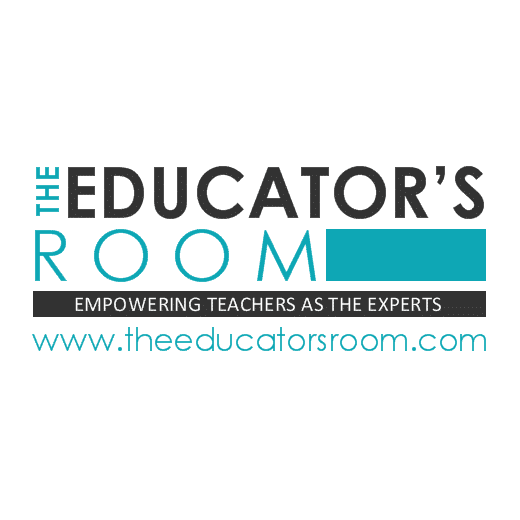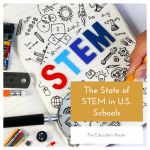The majority of homework in elementary schools and high schools tends to be practice or preparation, leaving less than 30% for integration, interpretation opportunities (Brozo, 2010). The Common Core is shifting assessment from a focus on skills and gains of knowledge to information analysis, critical evaluation, and expression of new understanding (CCSSI; www.corestandards.org). This means our standard practices in education are not necessarily preparing students for the Common Core. Instead of causing great alarm, this led me to re-examine isolated practices in our literacy program that could be improved to promote information analysis and new understanding. Review of our fall diagnostic testing allowed me to isolate inference questions as a common miscue. Fifty-one (51) of our 127 students (grades 1-4) tested missed inference questions, second graders being most in need of skill development. Repeat adherence to inference types of questions alone won’t improve this skill. A combination of methods, direct and indirect, rather than a single teaching method leads to the best learning (NRP). Students need to build confidence and to enjoy learning. This means that our gaming day will be our most important developmental day of the week.
Fun games alone become the incentive for repetitive experience with literacy skills. Certain games, Draw Something, Scribblenaut are intentionally designed for indirect exposures to print text instigating skills such as interpretation and inference. Scribblenaut relies on gamers who solve a puzzle by implementing words that take on actions within the puzzle itself. Like Mad Libs, the words you choose each time create a different scenario (Wikipedia). Draw Something relies on two alternating players who draw pictures to convey a definition of a word. Online players can see a drawing develop and scrambled letters which improve chances for a correct guess. For emergent learners, unlimited attempts to play each game do lead to improved vocabulary and as a school tool we can increase the opportunity for word exposure and inference by making this part of the relationship that students share in a one-to-one tutorial.
My administrator and I sat together and rewrote the rules for each game. Our modifications meant simplifying the rules to increase discussion time for word choices and rationale. We have provided mentors with time for helping students verbalize all possible definitions of a transformable word and to emphasize acceptance for creativity when a word choice is made. Mentors would need to praise students for defending word choices and integration through drawing. Building the practice of delivery and defense is more important than winning a game. My administrator and I had to sift through word banks in search of words that met the eleven different reading levels of our students. What Scribblenaut did with five people and six months of dictionary and encyclopedic research to create a database of transformable words, we accomplished in one week (Wikipedia).
Parents can be a big help when it comes to gaming and education. Educators need to consider the contributions that supportive home literacy practices offer because motivation to read increases when parental involvement is taken into consideration (Jossey-Bass. Ying, Klinger, Living., Fox, & Doe, 2011). Not all internet gaming is educational. Even the educational games do little more than help student develop base skills on their own. When adults use indirect gaming experiences as the catalyst for discussion or further investigation greater opportunity for print exposure and domain specific comprehension arise (Brozo, 2010). Many games now include links to twitter or Facebook in order to access suggestions offered by a greater audience. This audience could and should take place in the home. When my husband and I discuss the games our daughter is introducing we spend dinner time speculating on strategies and predicting outcomes. Whereas the usual “how was your day?” delivers a quipped response, gaming discussions are prolonged into a family time, applying just learned concepts to new material (Willingham, 1998).
Parents should not worry about being out of their element with educational gaming. World of Warcraft is a great example of a game in which the text is written for high school reading levels-higher than some newspapers (Kimura, 2012). A handy dictionary and a family discussion becomes a means for fixing comprehension issues on the spot. What happens if decisions made lead to failure? Good games rely on unlimited plays that lead to eventual measures of success. And good discussions lead to deliberate inter textual connections beginning with simple questions:
- Asking students “why do you like a game?” and encouraging a detailed answer validates summative interpretation and judgement. (Blooms Taxonomy)
- When parents & teachers model aloud that “the game reminds them of” (personal experience, another game or activity, a film or book) it encourages text to self, text to text, text to world connections (Lenski).
- Students should be encouraged to make their own inter textual connections aloud. (Lenski)
- Speculating on “what should we do to win?” develops prediction and strategic planning. (Kimura)
- Asking students how a game could improve prompts analysis, critical examination, and creativity (Marzano).
- Carefully arguing that this game isn’t real could lead to inquiry and investigation.
- Concluding what is then learned from the investigation builds argumentative defense and synthesis. (Blooms Taxonomy, Wiggins, Marzano)
- Asking if they can help you play your own game is constructive collaboration and honors a student’s sense of responsibility. (constructivism)
In conclusion, gaming proves to be an excellent vehicle for blending learning environments beyond classroom walls. Gaming builds relationships and rapport which is essential for healthy communities.
References:
Brozo, W.G. (2010). The role of content literacy in an effective RTI program. Reading Teacher, 64(2), 147-150.
doi:10.1598/RT.64.2.11. Retrieved from Ebsco Host.
Common Core State Standards Initiative. National Governors Association Center for Best Practices.
http://www.corestandards.org/the-standards. Retrieved 30 September 2012.
Kimura, M., (2012) Video gaming as edutainment. http://thinkingmaps.com/blog/video-gaming-as-edutainment. Retrieved 14
September 2012.
Lenski, S. (1998) Intertextual Intentions: Making Connections Across Texts. Clearing House, 72(2), 74. Retrieved from
Education Research Complete.
Marzano, R. J., Pickering, D., & Pollock, J.E. (2001). Classroom instruction that works: research-based strategies for
increasing student achievement. Alexandria, Va.: Association for Supervision and Curriculum Development.
National Reading Panel(NRP). (2000). The report of the National Reading Panel: teaching children to read, at a hearing before
Wiggins, G.P., & McTighe, J.(1998). Understanding by design. Alexandra, Va: Association for Supervision and Curriculum
Development.
Willingham, D. T. (2009). Why don’t students like school?: a cognitive scientist answers questions about how the mind works





Leave a comment